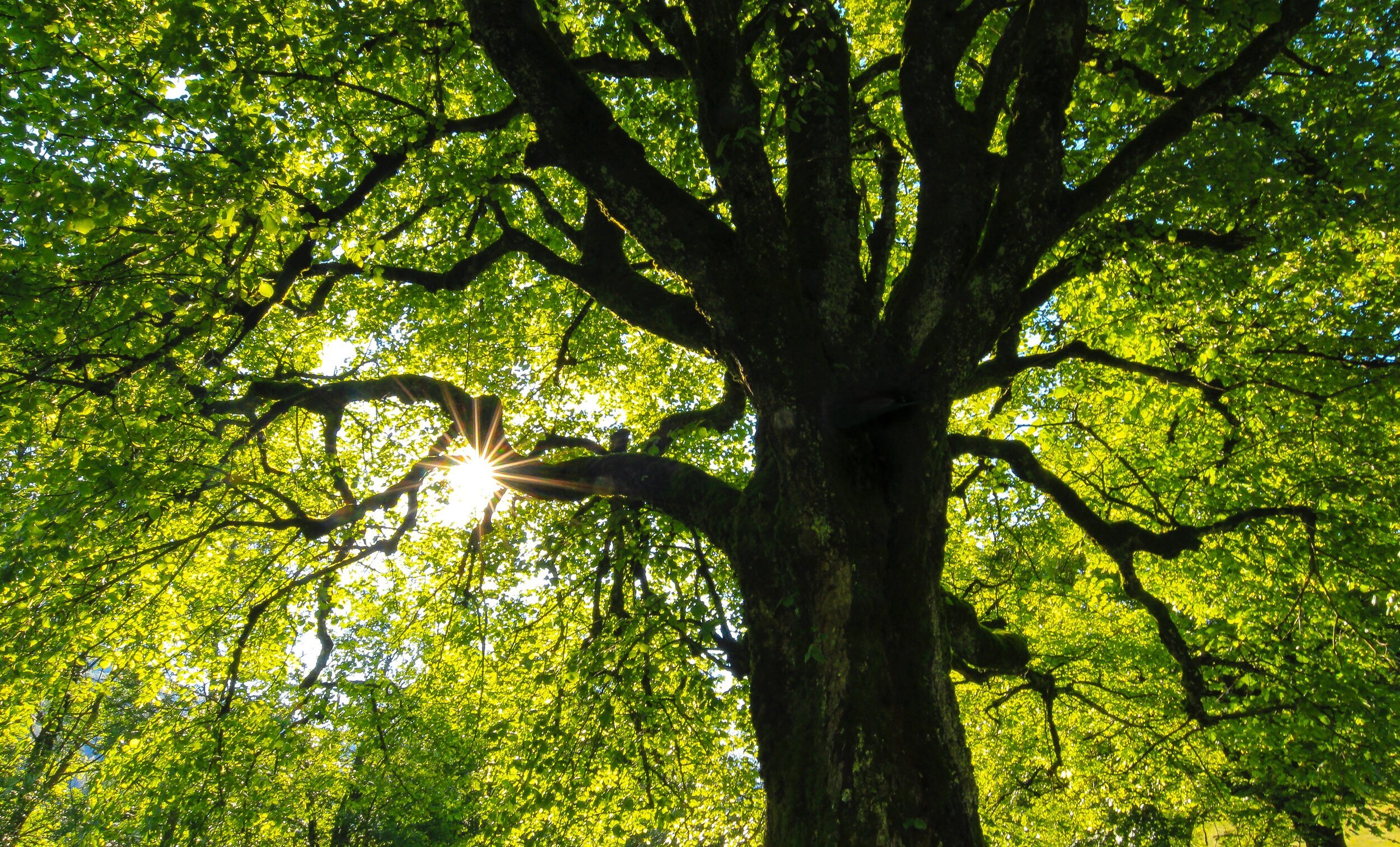Planting a Tree For A Lifetime of Benefits
By Aaliyah Cuthrell
Banner Photo by Matt Artz on Unsplash
Greenery is beautiful to look at, especially trees. The way they sway in a summer breeze and change the colors of their leaves in the fall is a marvel to behold. Look past the surface and you’ll find the extensive value of trees. Especially their influence on the mental health of others and air quality.
The Basic Benefits of Trees
Before delving further into the main health benefits of trees, let’s take a little time to go over some of their broader benefits.
Shade
Starting with one of the more obvious ones; they provide shade. On average, the earth can be 27 degrees cooler in the shade of trees, but the benefit of shade does even more for us individually. [WePlantitForward]
UV Protection
While we need sunlight to enhance our Vitamin D levels, too much sun can cause skin damage, sunburn, and even cancer. Trees play a vital role in blocking some of the more harmful rays of sunlight from our skin and helping to minimize skin damage.
Habitat
Another benefit of trees is their ability to provide a habitat. Trees provide shelter to many animals, insects, and birds worldwide. For these living organisms, a tree serves as their home. Without trees, animals like the Cryptic Treehunter and Spix’s Macaw, who rely on trees for shelter face extinction. [Ruiz] And with extinctions like those, our whole ecosystem would be thrown out of sync.
Vital Link in the Ecosystem
Additionally, trees help support the growth of other plant life. Flowering trees and plants provide honey bees with pollen to gather. Without trees, other plant life would suffer and so would the bees.
Food Source
However, of all these benefits, there is one that stands out from the rest—food. Trees provide a plethora of food and nourishment to humans and animals alike. Some trees (i.e. fruit trees) such as apple and orange trees, provide ready-to-eat food that grants us daily doses of proper vitamins and minerals. Some trees also provide nutrition through their byproducts, like the coconut water found from coconuts on palm trees, acorns for acorn flour, and maple syrup that is extracted from maple trees. [Trail] Collectively, this tree-based produce provides living organisms with the food and added nutrients that we need to lead a happy and healthy life.
Photo by freestocks on Unsplash →
Trees and Air Quality
Photo by Jan Huber on Unsplash
It is common knowledge that trees absorb carbon dioxide and release fresh oxygen for living organisms to breathe.
Removing Pollutants
FROM THE AIR
However, the knowledge that some trees collect air particles and help prevent dust storms isn’t widely known.
FROM THE GROUND
The same could also be said about how trees reduce up to 60% of ground level pollutants by slowing the precipitation of rain and snow before it hits the ground and filtering water through their root systems. [Brown] With these benefits factored in, it is pretty clear that trees do a lot just to help us take a breath of fresh air.
FROM WATER
However, it doesn’t just stop there; tree roots also filter chemicals from groundwater which purifies water. Collectively, trees work to keep not one but two of the biggest resources we need to survive fresh and clean. [Verweij]
Trees and Mental Health Impact
I feel the most important benefit—commonly overlooked—is how trees impact our mental health. Trees are the epitome of calm, providing a place of shade and respite for those that seek it, while offering a sweet melody of tranquility when they gently blow in the breeze. However, they’re more than just a place of rest for body and mind.
Reduces Noise pollution
Trees can reduce noise pollution by at least 50%, providing individuals with a quiet atmosphere to de-stress or relieve anxiety. [WePlantitForward]
Reduces violence
They also promote a calm environment and help people experiencing illness or living in violent environments to achieve relief.
Greater mental health and clarity
Additionally, lower levels of pollution have been known to promote better mental wellness and clarity in young adults and children.
Planting a tree triggers the Release of “feel good” Hormones
Lastly, consider the act of actually planting trees, which promotes mental wellness as the calm process of gardening can help release “feel good” hormones that can lighten your mood, such as endorphins. [Tenenbaum] Planting trees is soothing and an easy activity that can brighten your mood, and the atmosphere around you, providing a double boost of positivity. [Lambert]
The benefits of having trees around are outstanding, making them a staple in our lives to be cherished. It is vital for the environment and our own state of wellbeing that we keep our trees planted, vibrant, and healthy to maintain the delicate balance of our ecosystem and our own internal wellness.
Sources
Brown, “Trees and Forests Fight Climate Change and Water Pollution.” Huron River Watershed Council, 2020. Trees and Forests Fight Climate Change and Water Pollution - Huron River Watershed Council (hrwc.org)
Ruiz, “4 Species That Went Extinct This Century Because of Forest Loss.” Global Forest Watch, 2020. 4 Species That Went Extinct This Century Because of Forest Loss | Data and Research | Global Forest Watch Blog
Tenenbaum, “Digging in the Dirt Really Does Make People Happier.” Forbes, 2020. Digging In The Dirt Really Does Make People Happier (forbes.com)
Trail, “Edible Trees: Foraging for Food from Forests. American Forests, 2017. Edible Trees: Foraging for Food from Forests - American Forests
Verweij, “How Our Trees Clean Our Water.” Arlington, VA County, 2017. How Our Trees Clean Our Water - Environment (arlingtonva.us)
We Plant it Forward, 2021. “Benefits of Trees.” Benefits of Trees — We Plant it Forward
For more reading on tree’s positivity, see this other We Plant it Forward blog post: Lambert, “Trees and Their Power of Positivity”. We Plant it Forward, 2021. https://weplantitforward.org/blog-list/2021/4/8/trees-and-their-positivity-power



